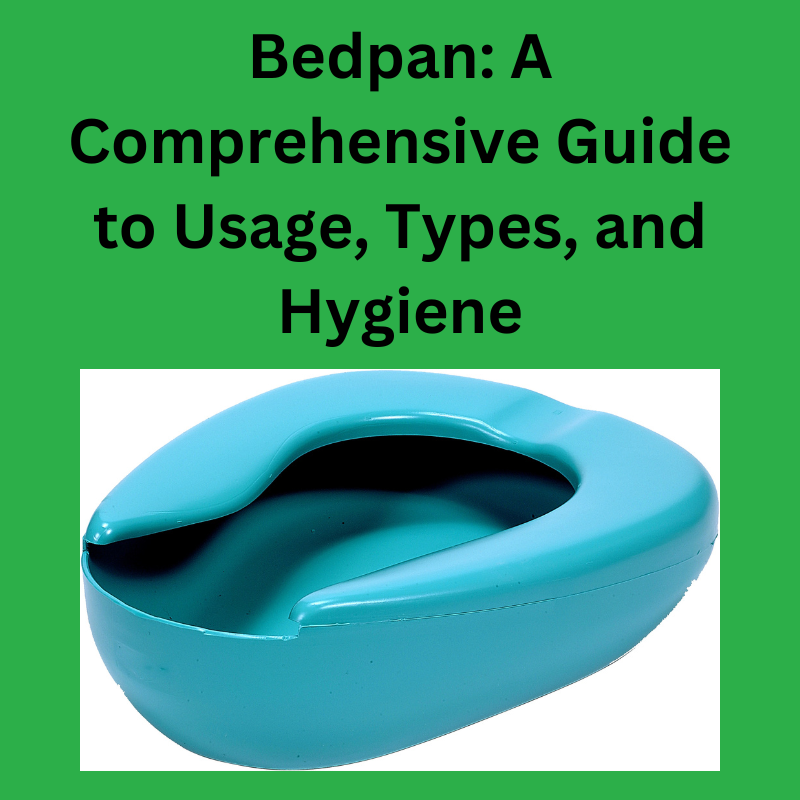Bedpan: A Comprehensive Guide to Usage, Types, and Hygiene
Overview
A patient’s comfort and dignity are of utmost importance in the medical field. A bedpan is one of the most important pieces of equipment for individuals who are bedridden. Bedpans offer a useful alternative for people who are unable to use a toilet, whether in hospitals, assisted living facilities, or at home.
A Bedpan: What Is It?
For people who are ill, injured, or disabled who cannot move to a bathroom, a bedpan is a portable toilet equipment. It ensures that the patient’s comfort is not significantly disrupted while also assisting in maintaining hygiene.
Bedpan Types
1. A typical bedpan
a classic style with a deeper bowl to collect stool and urine. Most patients can use it.
2. Bedpan Fracture
For individuals with restricted movement, particularly those who have suffered back injuries or fractures, a flatter and smaller version was created.
3. Throwaway Bedpan
These are hygienic and lower the danger of illness because they are made of biodegradable materials.
4. Bedpans vs. Portable Urinals
Bedpans are still necessary for bowel movements; however, male patients may occasionally prefer urinals for urination.
Materials for Bedpans
Stainless steel is strong and simple to clean, although it could feel cold against the skin.
Plastic: Comfortable and lightweight, but not as strong.
Disposable: Not eco-friendly, yet handy for preventing infections.
The Correct Way to Use a Bedpan
Assist the patient in turning over on their side.
Gently slide the bedpan underneath them.
Make sure they are solid and comfy.
Give them privacy, yet be accessible if necessary.
Clean the patient after carefully removing the bedpan.
Procedures for Cleaning and Hygiene
After use, immediately rinse with hot water.
Use medical-grade disinfectants.
Before and after helping the patient, wash your hands well.
Typical Problems and Their Fixes
Discomfort: Adjust position or apply gentle cushioning.
Spills: Make sure they are supported and positioned correctly.
Control odors by using deodorizing products and cleaning frequently.
Other Options for Bedpans
urinary incontinence catheters.
Patients who are able to sit up can use bedside commodes.
Diapers for adults for ongoing care.
The Effect of Using a Bedpan on the Mind
Many patients experience discomfort or embarrassment. In addition to maintaining dignity, caregivers should offer solitude and reassurance.
Improvements in Bedpan Technology
Self-cleaning bedpans and smart bedpans with sensors to identify usage and enhance hygiene are examples of contemporary advancements.
In conclusion
A bedpan is an essential medical instrument that guarantees patient comfort and cleanliness. Making the experience as respectful as possible requires proper use, cleaning, and psychological support.
FAQs
1. How frequently should one empty a bedpan?
to preserve cleanliness and avoid infections after each use.
2. Can infections be brought on by a bedpan?
Yes, if improperly cleaned. Sanitization must be done on a regular basis.
3. What are some ways to improve the comfort of using a bedpan?
Offering privacy, making sure you’re positioned correctly, and using soft padding can all assist.
4. How should a reusable bedpan be cleaned?
Make use of medical disinfectant, hot water, and careful drying.
5. Are there any particular bedpans designed for those who have trouble moving around?
Indeed, fracture bedpans are made to be used with the least amount of movement possible.






Reviews
There are no reviews yet.